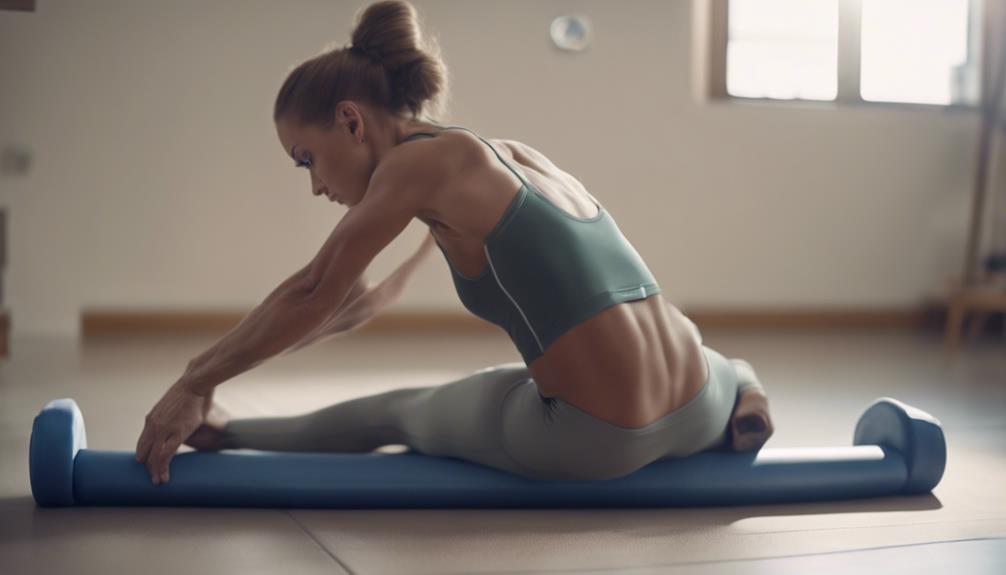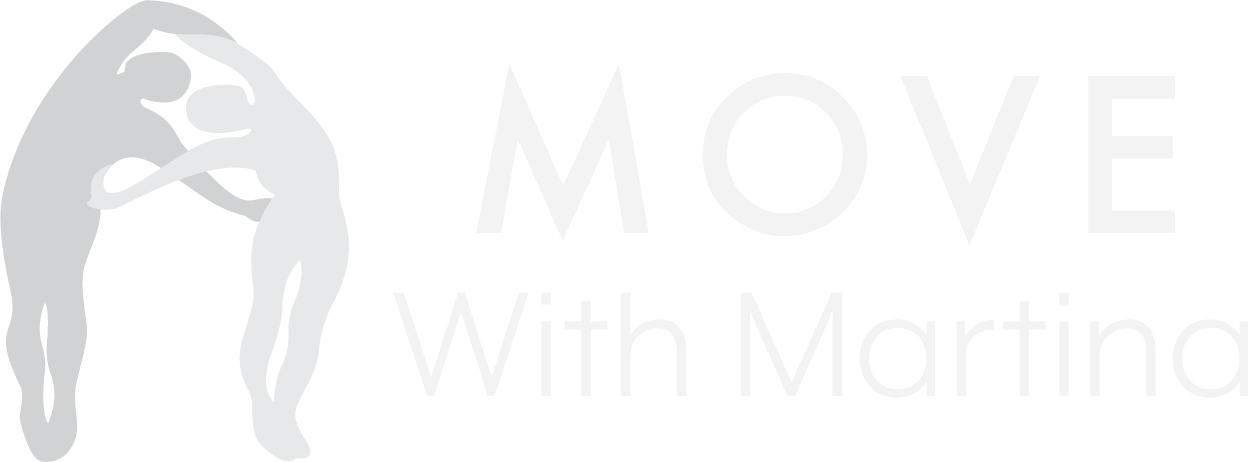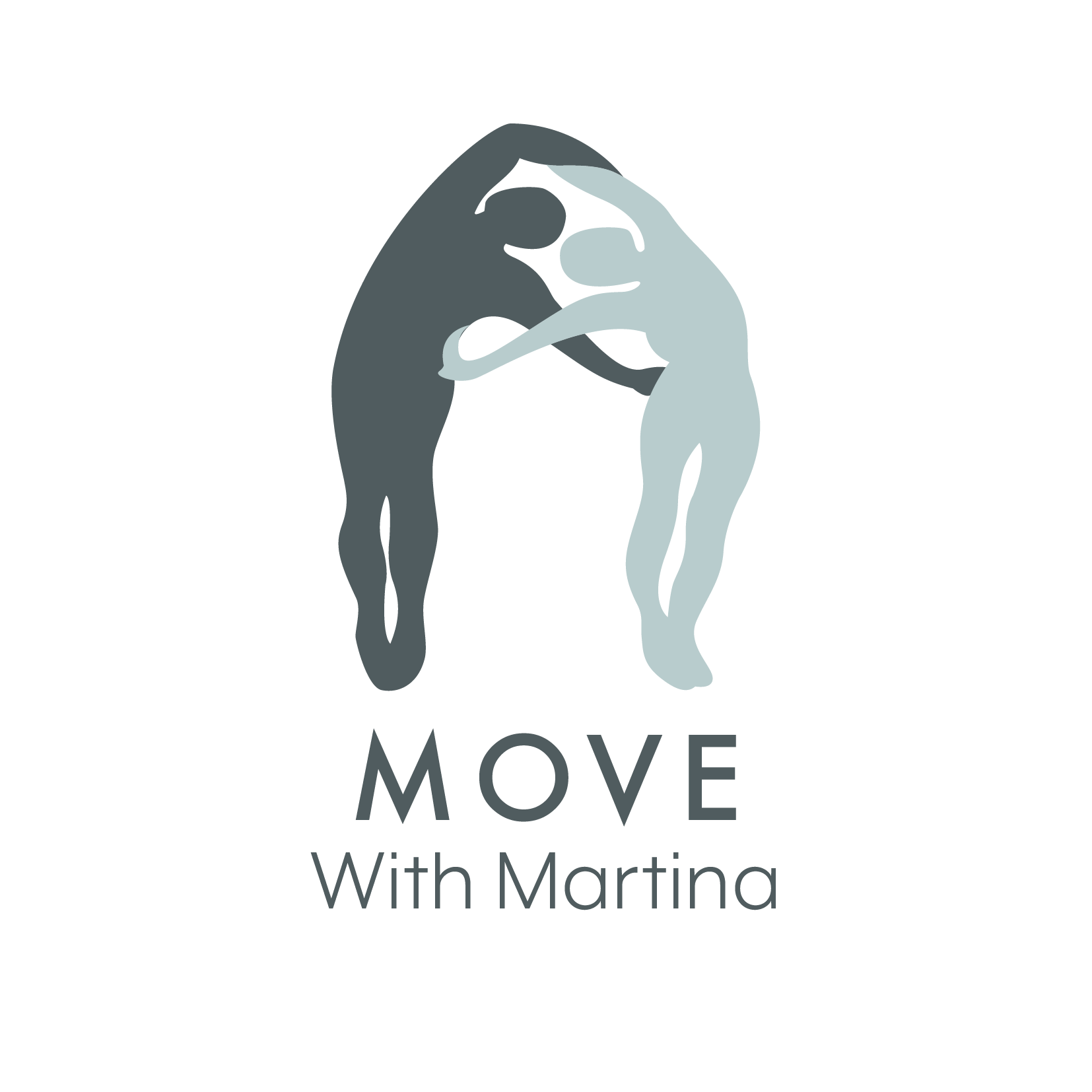
Top Flexibility Drills for Gymnasts: Myofascial Focus
Exploring flexibility exercises tailored for gymnasts with a focus on myofascial techniques can revolutionise their training. These methods not only target the muscles but also the complex network of fascia surrounding them, potentially unlocking new levels of mobility and performance.
Incorporating myofascial-focused exercises into their routine offers gymnasts a nuanced way to improve flexibility. This approach, by considering the connection between muscles and fascia, provides a deeper understanding and more effective application of flexibility techniques, aiding gymnasts in advancing their abilities.
Leg Lowers for Myofascial Flexibility
Leg Lowers: A Key to Unlocking Myofascial Flexibility
Leg lowers aren't just another exercise on the list for gymnasts; they're a game-changer for enhancing myofascial flexibility. These exercises are all about zeroing in on specific muscle groups that are crucial for not only improving your range of motion but also for building solid lower body strength. What makes leg lowers stand out is how they encourage flexibility gains. It's all about the technique here—focusing on the hamstring of the front leg and the hip flexor/quad of the back leg. By bringing these stretches into their daily practice, gymnasts are not just working their legs but also firing up their core. This is key because a strong core is the secret sauce to increased flexibility and range of motion in the legs.
Why Leg Lowers Matter
You might wonder why a simple move like leg lowers is so pivotal. Well, it's about the precision and the impact. Incorporating just 2 sets of 10 repetitions for each leg can significantly enhance myofascial flexibility and muscle control. This isn't just a guess; it's backed by research. The beauty of leg lowers lies in their simplicity—they're straightforward to teach and integrate into a gymnast's training schedule. This simplicity ensures consistent progress in both flexibility and strength, laying a solid foundation for the muscle control and flexibility that are critical for gymnastic routines and performances. Essentially, leg lowers are indispensable for any gymnast aiming to excel.
Bringing Leg Lowers into Your Routine
Adding leg lowers to your training isn't just about going through the motions. It's crucial to engage the right muscles and maintain the correct form to reap the benefits. For anyone looking to boost their lower body strength and flexibility, starting with leg lowers can be a smart move. They're not only beneficial for gymnasts but for anyone seeking to improve their physical condition. The key is consistency and precision—make sure you're doing them correctly and regularly to see progress.
Here's Why It Matters
The reason leg lowers are so effective is that they target muscles often overlooked by other exercises. They don't just stretch these muscles; they strengthen them, providing a dual benefit that's hard to come by. This dual action is what makes leg lowers a cornerstone exercise for improving myofascial flexibility.
Custom Quote: 'Leg lowers are not just an exercise; they're a pathway to unlocking the body's full potential for flexibility and strength, making them a must-have in any gymnast's training toolkit.'
In Conclusion
Leg lowers are much more than a basic stretch. They're a critical component of gymnastics training, offering significant benefits for myofascial flexibility and lower body strength. By focusing on the technique and ensuring consistent practice, gymnasts can unlock a new level of flexibility and range of motion, essential for top-notch performances. Whether you're a seasoned gymnast or just starting, incorporating leg lowers into your routine can lead to remarkable improvements in your physical capabilities.
Eccentric Split Sliders to Enhance Flexibility
Enhancing Myofascial Flexibility with Eccentric Split Sliders
To really take your gymnastic routines to the next level, it's worth getting into eccentric split sliders. These aren't your average stretches; they involve a methodical five-step process where you lower into a split while using sliders or foam rollers. This isn't just about showing off; these exercises zero in on the muscles you need for those impressive deep splits in gymnastics. Studies have found that adding these drills to your routine can really ramp up your flexibility, help dodge injuries, and boost your overall performance.
Key Benefits of Eccentric Split Sliders
- Improves flexibility progressions
- Utilises a five-step controlled lower and hold technique
- Targets key muscles for gymnastic splits
- Recommended for regular practice
- Leads to long-term improvements
Integrating eccentric split sliders into your regular training can seriously up your game when it comes to myofascial flexibility, making those performances smoother and reducing your injury risk.
Why Eccentric Split Sliders Are a Game-Changer
Let's chat about why these sliders are such a big deal. They're not just another exercise; they're a targeted approach to unlocking a deeper range of motion. That deep dive into a split isn't just about flexibility; it's about control, strength, and precision. By focusing on a slow, controlled descent into the split and maintaining it, you're not only pushing your muscles but also teaching them to hold that tension, which is crucial for gymnastics.
Bringing Eccentric Split Sliders Into Your Routine
Making these sliders a part of your daily practice could be the difference you've been looking for. It's not an overnight miracle; it's about consistent effort over time. Think of it as investing in your body's ability to perform at its best. And remember, it's not just about the sliders; it's about how you use them. Focus on that controlled lower and hold, and you'll start to see those flexibility gains you've been aiming for.
Custom Quote: 'Embracing eccentric split sliders is not just about reaching new lows; it's about raising your performance highs.'
Incorporating these sliders into your training isn't just another task; it's a strategic move towards better performance and health. With regular practice, the benefits are clear. You'll not only see improvements in your flexibility but also in the way your body handles the demands of gymnastics. So, give it a go and watch how it transforms your routines!
Resisted Band Kicks for Myofascial Stretching
Why Resisted Band Kicks Are a Game Changer in Flexibility Training
Ever wondered how gymnasts get so incredibly flexible? Well, a big part of their secret is out, and it's all thanks to resisted band kicks. A study by Dr. William Sands has thrown a spotlight on this technique, showing us just how effective it can be. Let's dive into why this method is taking the gymnastics world by storm and how it can benefit you too.
Safety First: A Better Option Than Ankle Weights
One of the standout benefits of using resistance bands for your kicks is how much safer it is compared to the old-school method of strapping on ankle weights. We all know pushing our limits is part of getting stronger and more flexible, but doing it safely is key. The beauty of resistance bands lies in their ability to provide tension without adding undue stress to your joints. This means you can stretch and strengthen without the worry of injury that often comes with heavier weights.
Starting Slow: The Path to Progress
When you're just starting with resisted band kicks, beginning in a lying position can really help. It's not just about making things easier; it's about control. You see, when you're lying down, you've got a better grip on your movements, and there's less chance of doing something wrong. As you get stronger and more confident, standing kicks come into play, challenging your balance and flexibility even further.
Consistency is Key: Regular Practice Pays Off
Just like any skill, the magic happens with regular practice. It's not about doing a marathon session once in a blue moon; it's the little and often that leads to big gains in flexibility. This isn't just talk; it's backed up by solid evidence from Dr. Sands' research. Those gymnasts didn't get to where they are by chance; it was all about consistent effort.
Evidence-Based Success: Real Results for Gymnasts
Speaking of Dr. Sands' study, it's not every day you come across a technique that's got solid evidence backing its effectiveness. This isn't just some fad; it's a proven method to boost your flexibility. Gymnasts are some of the most flexible athletes out there, and if it works for them, it can work for us too.
Custom Quote: 'Flexibility isn't just for gymnasts; it's for everyone. Using resisted band kicks is like unlocking a secret door to your body's true potential.' – Dr. William Sands.
In wrapping up, resisted band kicks are more than just another exercise; they're a smart, safe, and effective way to increase your flexibility. By starting slow, practicing regularly, and using the resistance bands safely, you're on your way to achieving the kind of flexibility gymnasts are known for. And remember, it's not just about being able to do splits; it's about giving your body the range of motion it deserves for a healthier, more active life.
Front and Back Leg End Range Lifts for Flexibility
Improving Flexibility in Gymnastics: The Role of Front and Back Leg End Range Lifts
When it comes to getting better at gymnastics, making sure you're as flexible as possible is key. That's where doing specific exercises like front and back leg end range lifts comes into play. These aren't just your run-of-the-mill stretches. They target the exact muscles you need for those high-flying jumps and breathtaking leaps, focusing on getting your joints and core as strong and stable as they need to be.
Imagine trying to perfect a jump or a leap. For that, you need your legs to not only stretch far but also to be strong enough to push you into the air and land safely. That's what these drills are all about. With exercises like kneeling hip lifts for your front leg and curled-up hip lifts for your back leg, you're working on getting that crucial range of motion that sets the stage for stellar performances.
Doing about 2 sets of 10 repetitions for each of these drills can really make a difference. It's not just about stretching farther; it's about making sure your muscles can handle the stretch and keep you balanced and stable no matter what gymnastics throws your way.
Why These Drills Matter
- Kneeling Hip Lifts: By focusing on the front leg muscles, these lifts are all about improving your balance and joint stability. This is super important for hitting those leap angles just right.
- Curled-Up Hip Lifts: These target the muscles in your back leg, which is essential for muscle activation and building that core strength. It's the kind of exercise that boosts your range of motion, making those flexible moves look effortless.
In a nutshell, weaving these front and back leg end range lifts into your training regimen is a game-changer. It's not only about achieving that swoon-worthy flexibility but also ensuring your body is up to the task of performing complex gymnastics skills safely and effectively.
A Gymnast's Perspective
As one gymnast put it, 'Incorporating these lifts into my routine was a turning point for me. It wasn't just about being able to stretch further; it was about gaining the strength and stability to make every move count.'
Remember, the goal is to develop flexibility that's functional and beneficial to your gymnastics routine. By focusing on the muscles and ranges needed for your sport, you're setting yourself up for success, one drill at a time.
In Conclusion
To wrap it up, don't underestimate the power of front and back leg end range lifts in boosting your gymnastics game. Whether you're aiming to perfect your leaps or just want to improve your overall flexibility, these drills are your ticket to achieving those goals. Remember, it's not just about stretching—it's about stretching smart.
Leg Drivers to Improve Myofascial Flexibility
Leg Drivers: Your Secret Weapon for Myofascial Flexibility
When we talk about getting better at gymnastics, it's not just about the flips and twists. It's the behind-the-scenes heroes like leg drivers that really amp up a gymnast's game. These are dynamic exercises focusing on the hamstrings, glutes, and core muscles. They're a big deal because they not only make you more flexible but also give you the kind of core stability and hip mobility you need to nail those gymnastics moves with finesse. Let's dive into why making leg drivers a part of your training could be a game changer.
- Why Flexibility Matters: Think of leg drivers as your muscles' best friends. They work against gravity, giving your muscles a solid stretch and wake-up call. This means you can reach further and leap higher without breaking a sweat. Flexibility is your ticket to pulling off advanced gymnastics skills smoothly.
- The Strength and Power Boost: Here's the scoop – by targeting your hamstrings, glutes, and core, leg drivers are like a secret potion for building strength and power. This translates to executing those high-flying jumps and leaps with more oomph and precision.
- The Magic of Myofascial Activation: It's all about getting those muscle fibres talking to each other better. This kind of myofascial activation means your body moves as one slick, coordinated unit. Perfect for those complex routines that require every muscle to play its part perfectly.
- Level Up with Progressive Resistance: For the pros out there, ramping up your leg drivers with resistance bands can add that extra layer of challenge. It's like telling your muscles, 'I know you can do more.' And they will, leading to even greater Flexibility and strength.
Why It's a Big Deal
Let me put it this way – incorporating leg drivers into your routine is like giving your gymnastics performance a turbo boost. It's not just about being able to do the splits; it's about having the power, control, and flexibility to make every move look effortless.
Imagine being on the floor, your body moving with the kind of grace and power that comes from a rock-solid core, flexible muscles, and the ability to leap into the air as if you were made of feathers. That's what leg drivers can do for you.
A Personal Insight
I once heard a coach say, 'Flexibility is not just about reaching your toes; it's about reaching your goals.' That stuck with me. It's not just the physical act of stretching; it's about pushing the boundaries of what your body can do and achieving those gymnastics milestones you've set for yourself.
In Conclusion
Leg drivers aren't just another item on your workout checklist. They're the foundation for building a gymnast's flexibility, strength, and overall performance. By challenging your muscles in new ways and keeping your training dynamic, you're setting yourself up for success on the mat. So, why not give them a try and see just how far they can take you?
Conclusion
Adding myofascial-focused flexibility drills to your gymnastics training can really change the game. It's about more than just stretching; it's a way to enhance your flexibility, ease muscle stiffness, and sidestep injuries. Using tools like foam rollers and techniques for self-myofascial release, along with a variety of stretching routines, you're directly addressing those stubborn muscle tensions and fascia knots. This isn't just good for flexibility; it also sharpens your overall performance and movement. Stick with these drills regularly, and you'll likely see a significant boost in your flexibility, smoother movements, and a stronger defense against injuries.
Now, if all of this sounds a bit daunting, or if you're not quite sure where to start, don't sweat it. Move With Martina is here to lend a hand. Think of me as that friend who's always got your back, especially when it comes to navigating the world of gymnastics training. Whether you're feeling a tad overwhelmed or just need some advice on where to take your training next, I'm here for you.
Got a burning question or simply curious to learn more? I'd love to chat with you. Whether it's about our MAP Movement Individual Sessions, getting together with others in our MAP Movement Group Classes, or joining in from the comfort of your home with MAP Movement Online Classes, there's something for everyone. Don't hesitate to reach out; I'm all ears and ready to support your journey in gymnastics.
Remember, it's all about taking that first step. So, why not drop us a line? Let's make your gymnastics journey even more exciting together.



